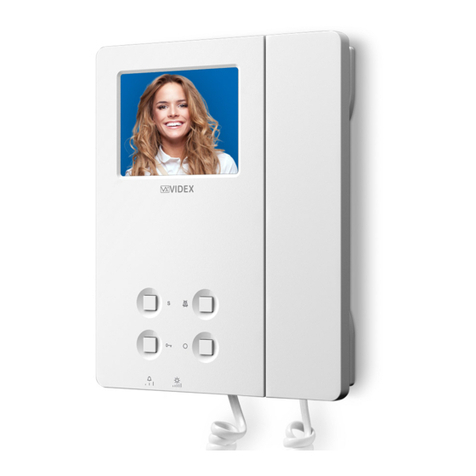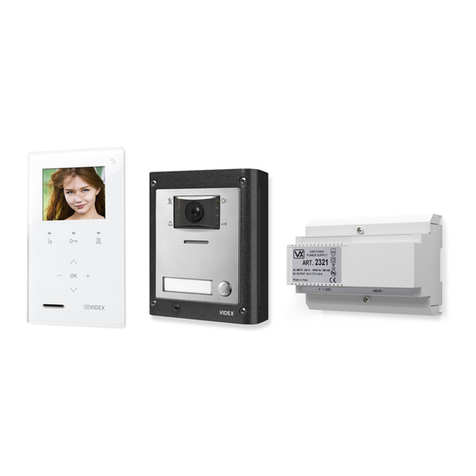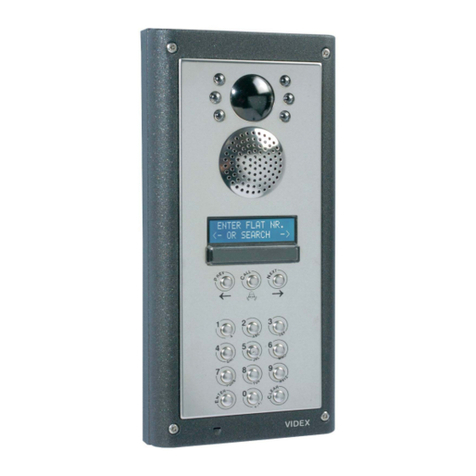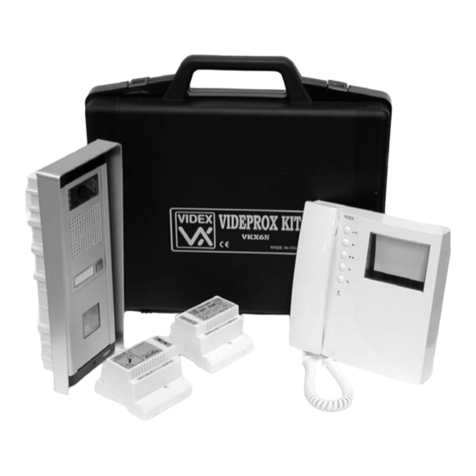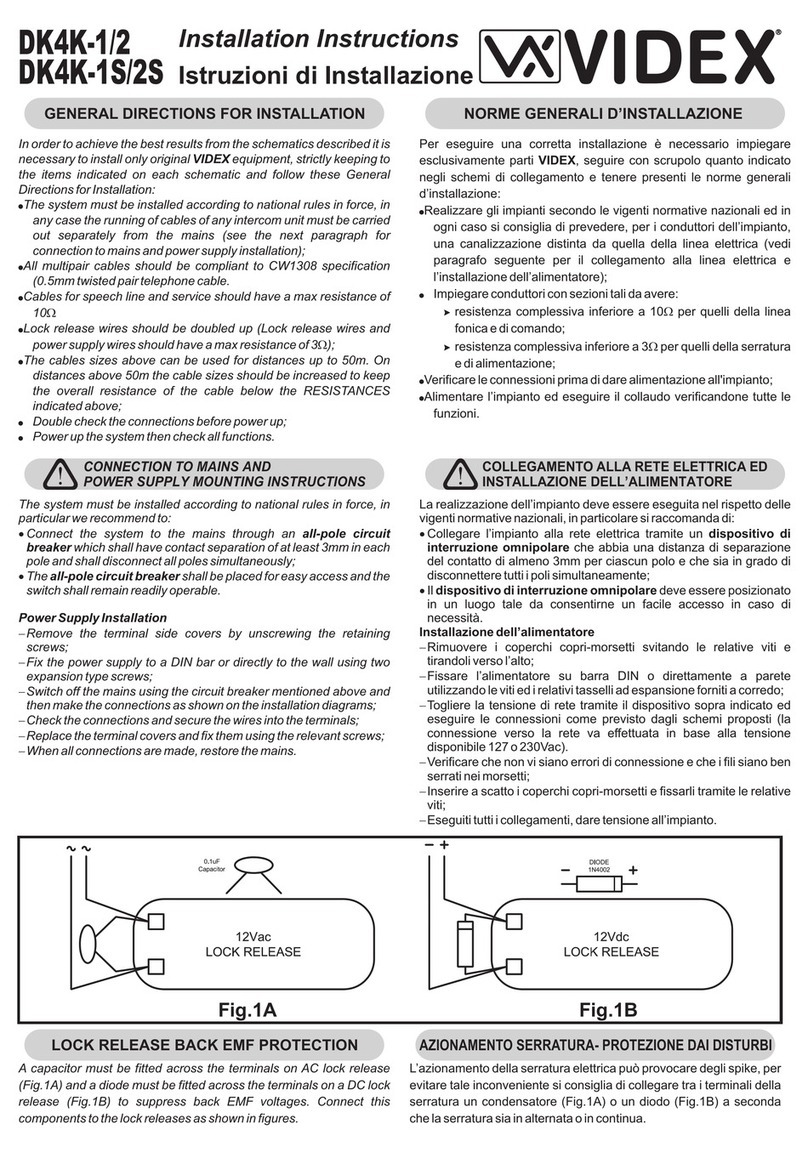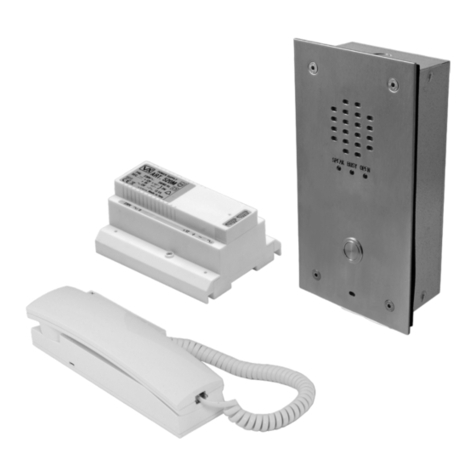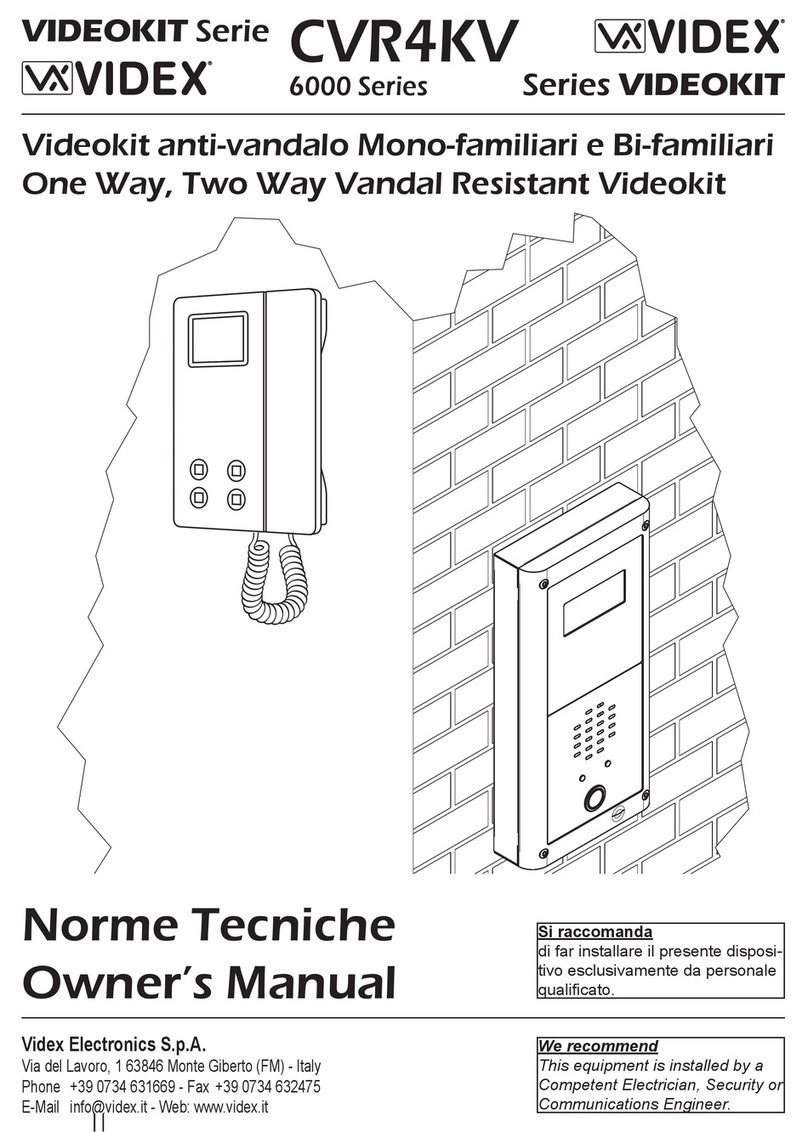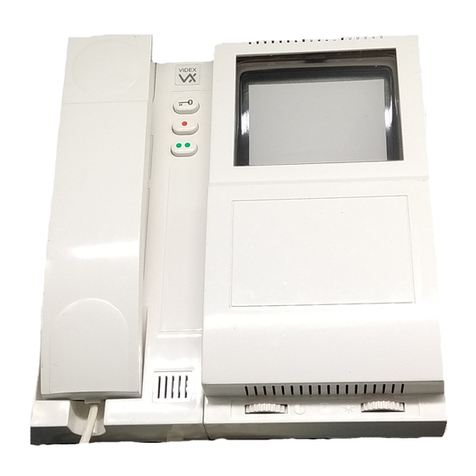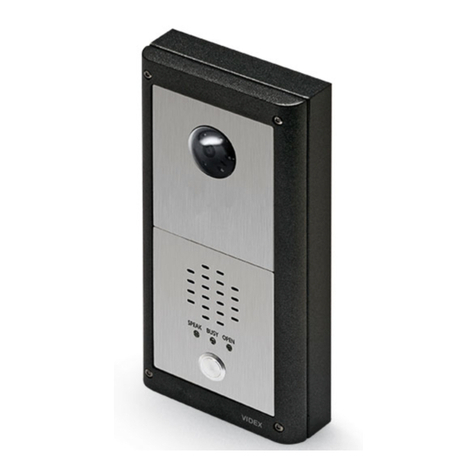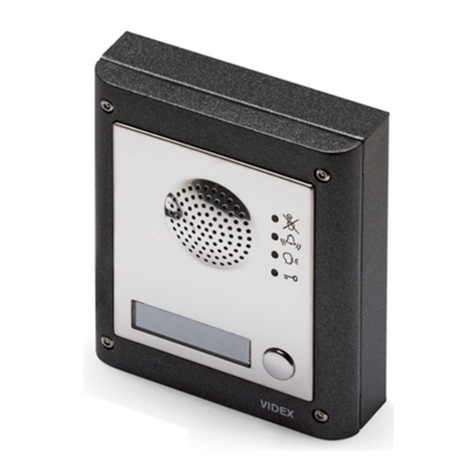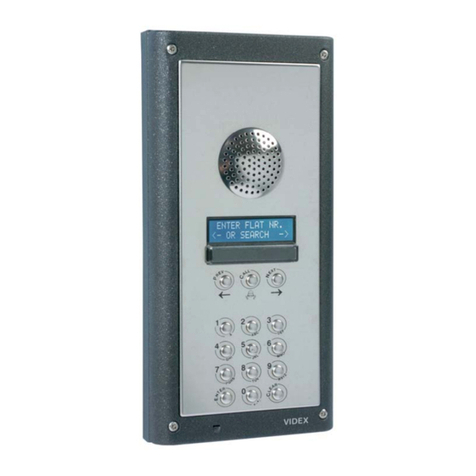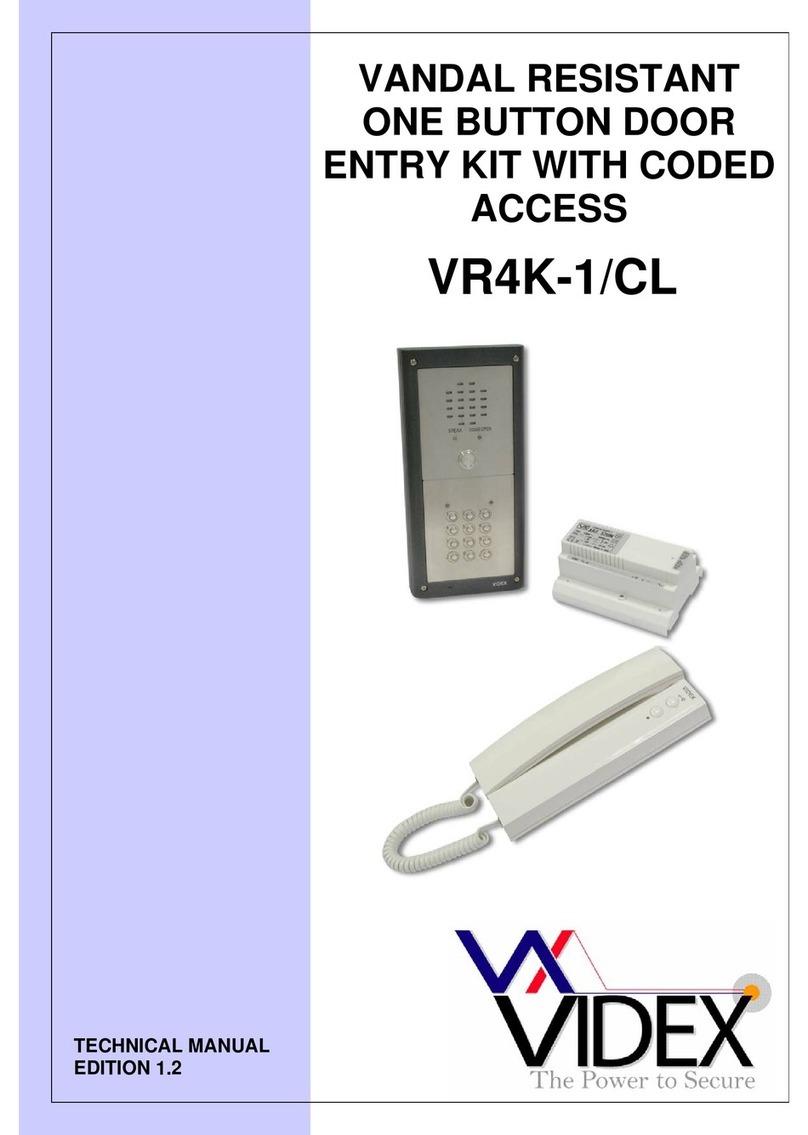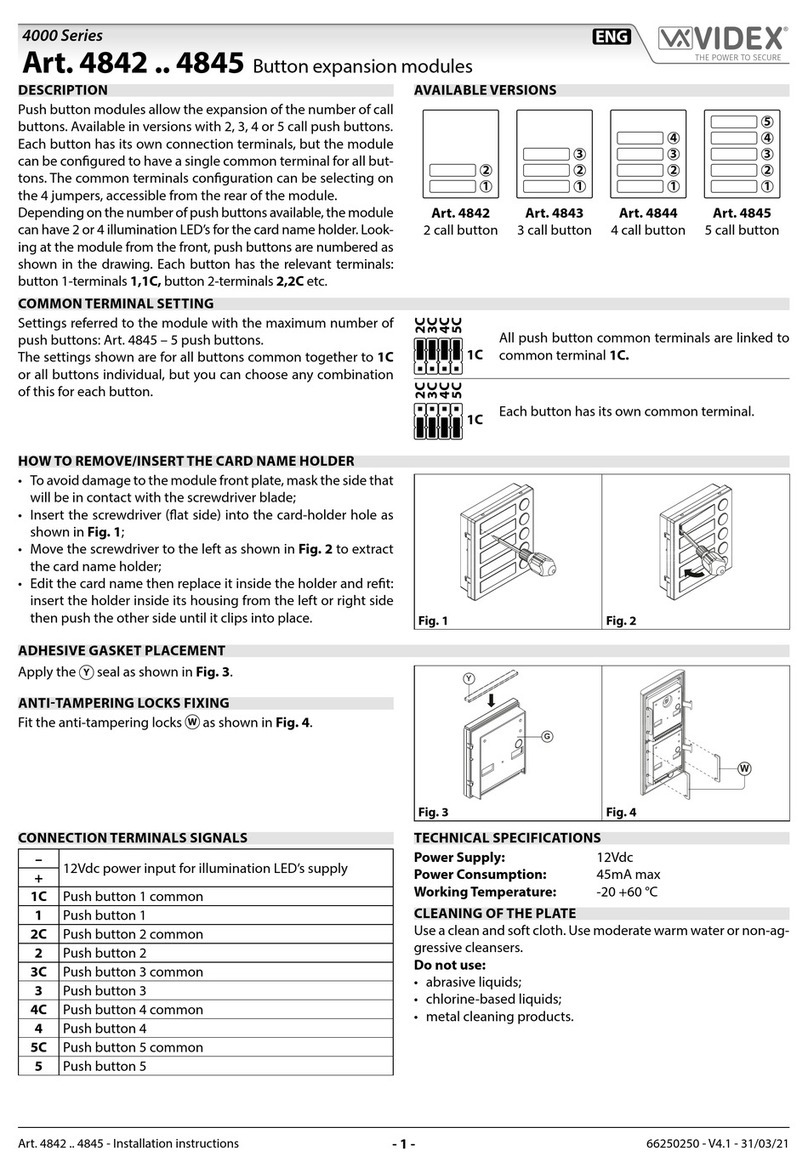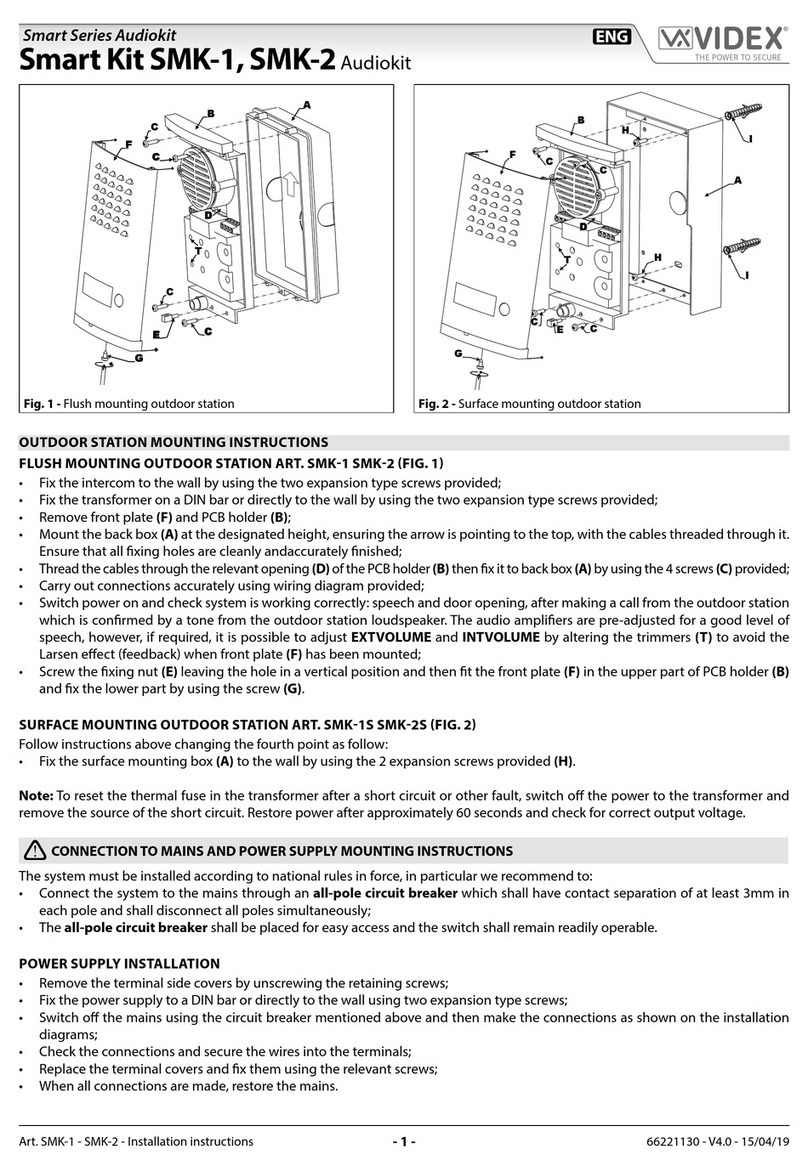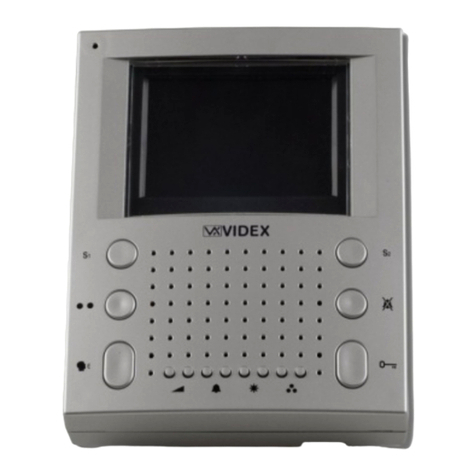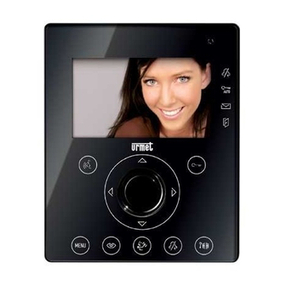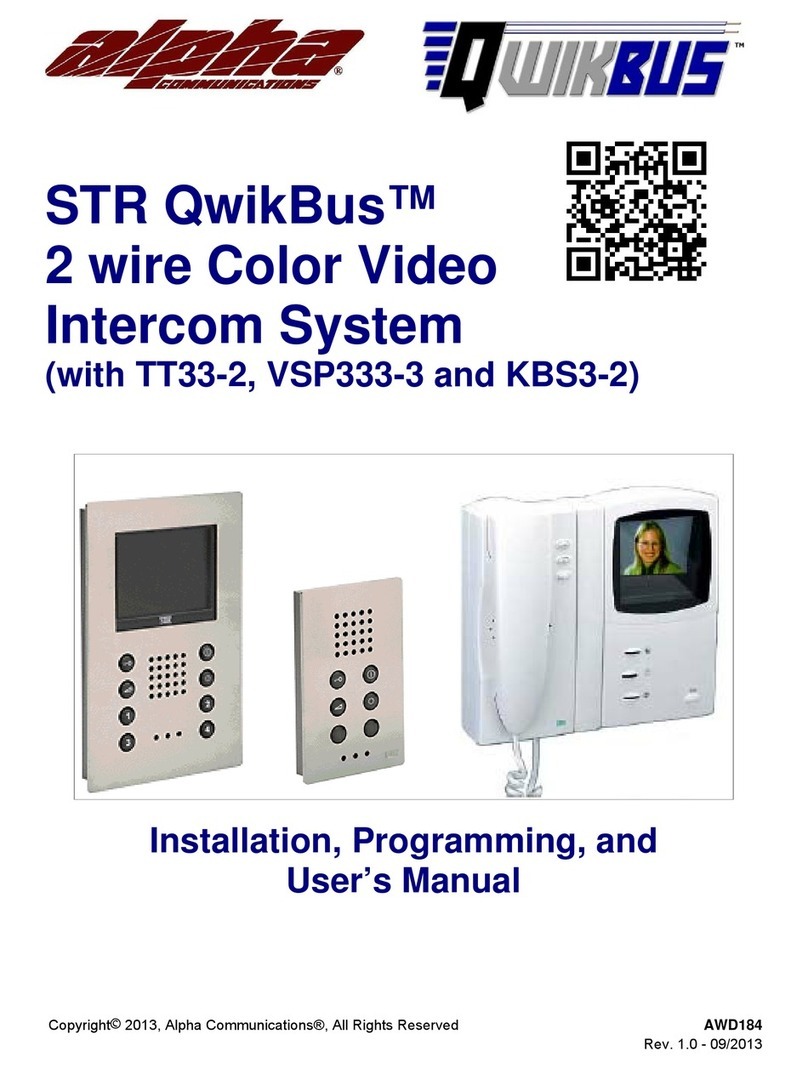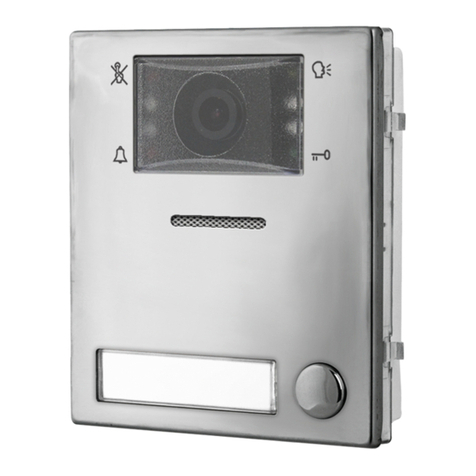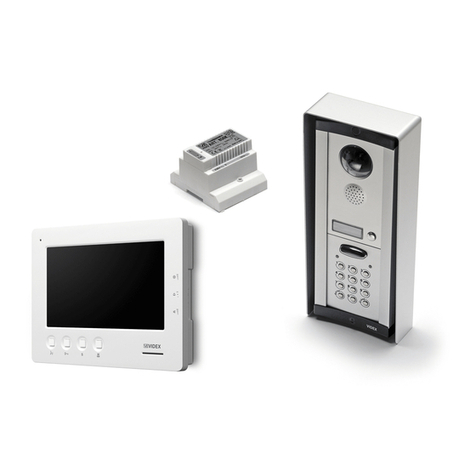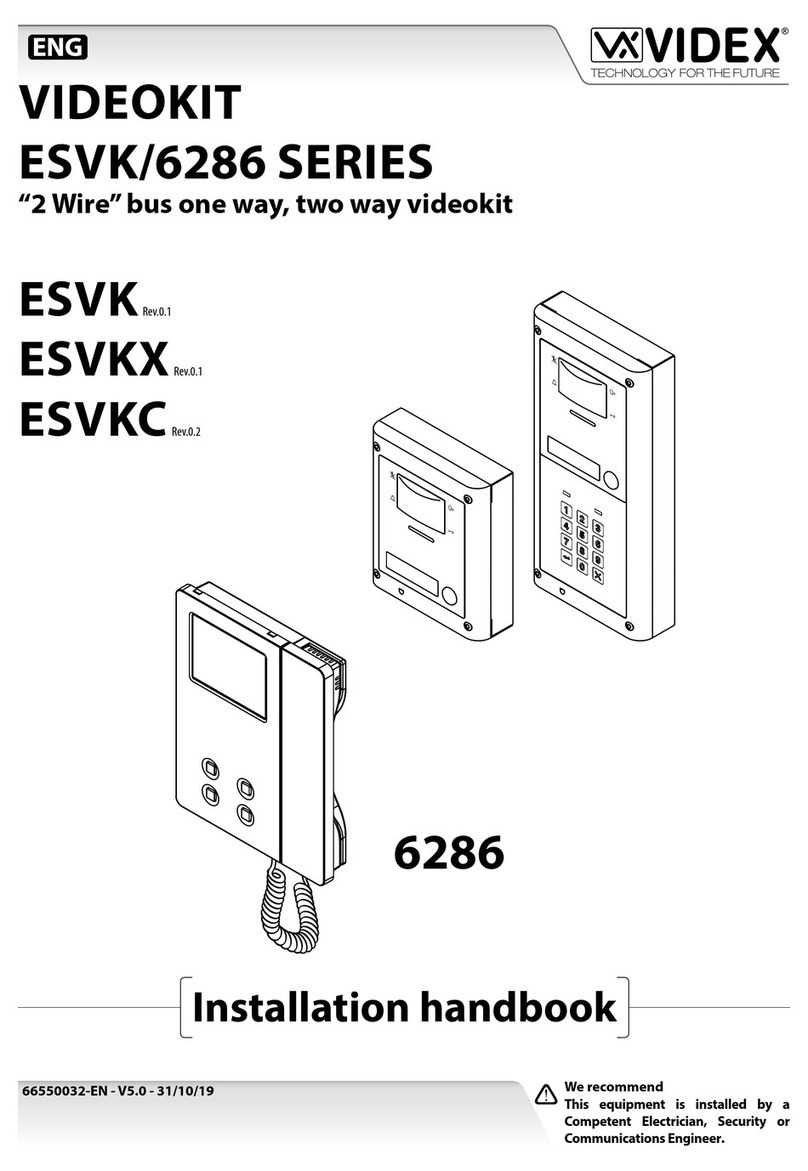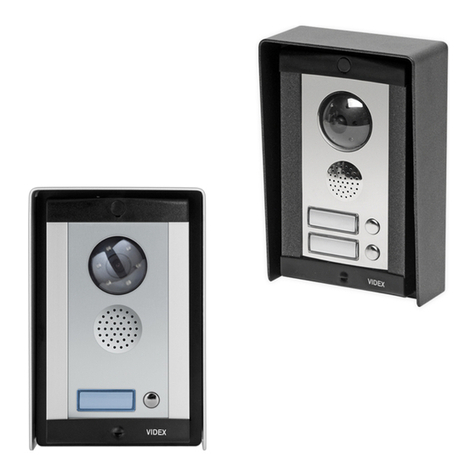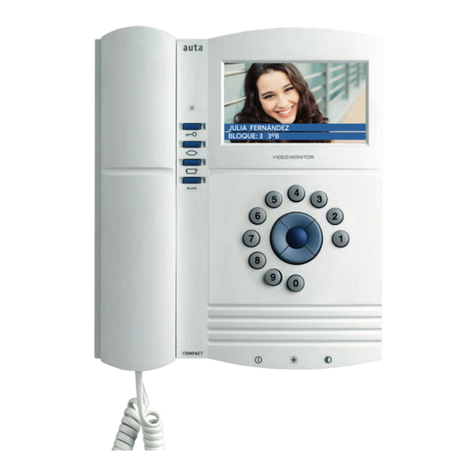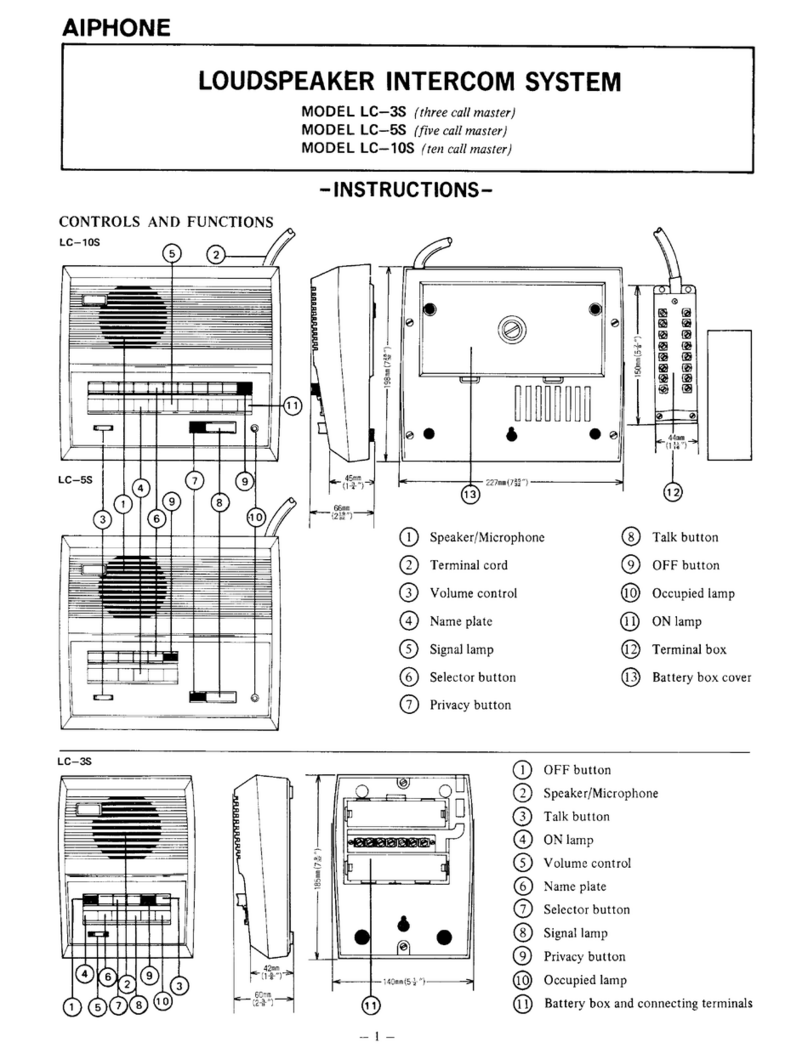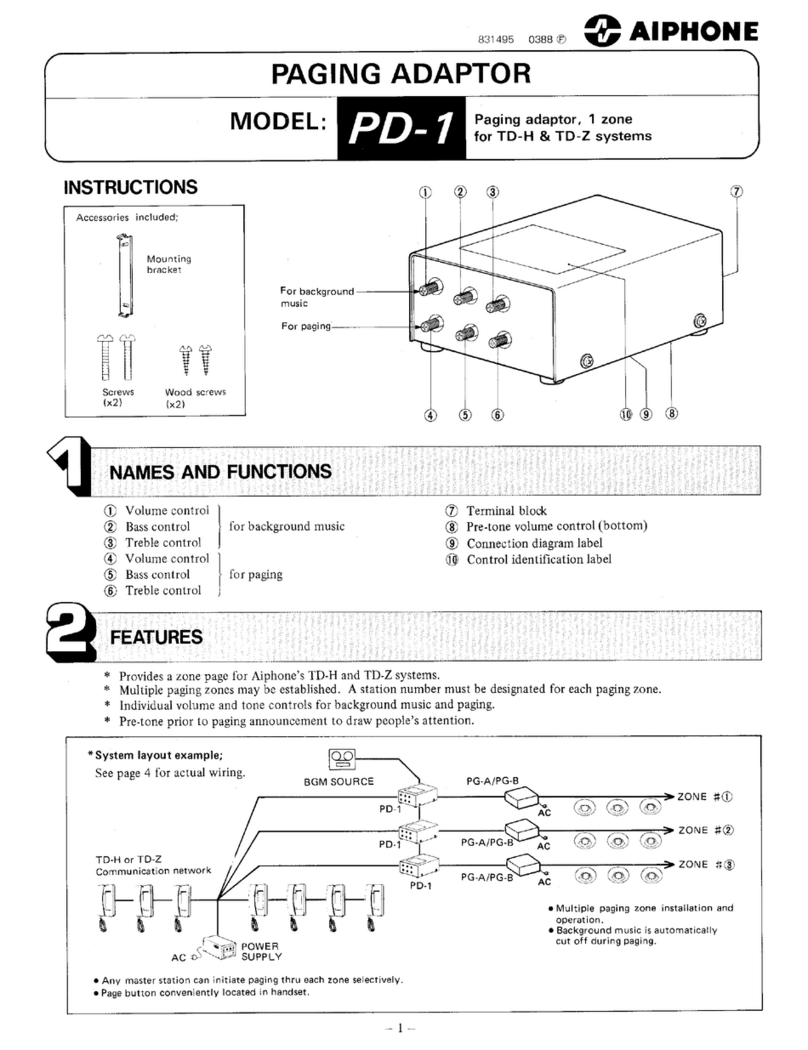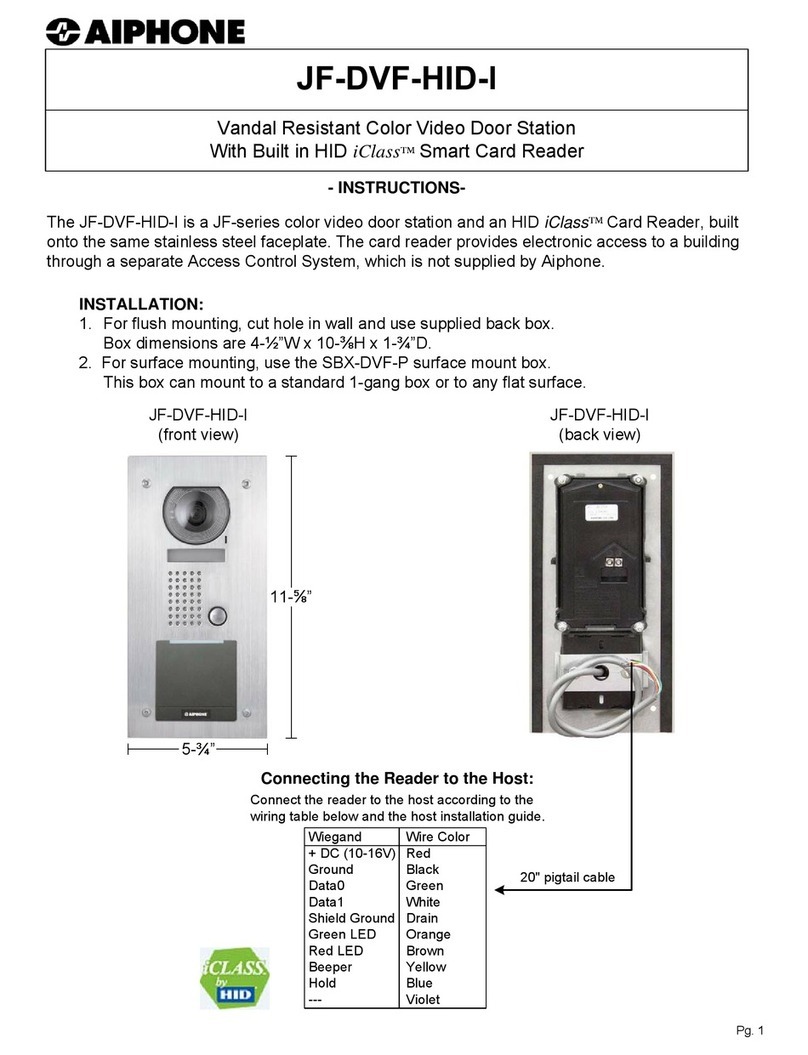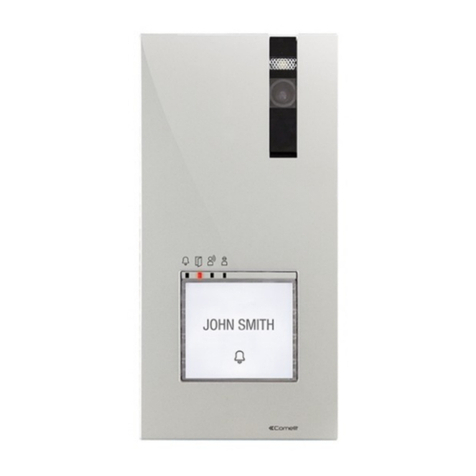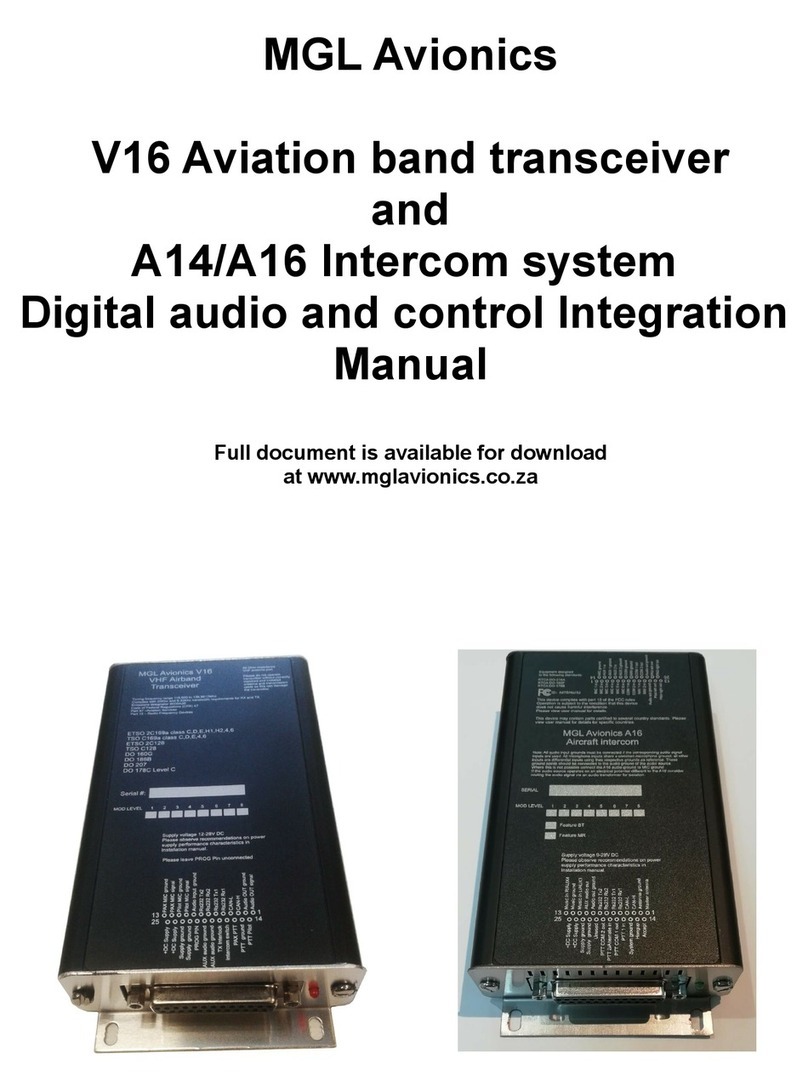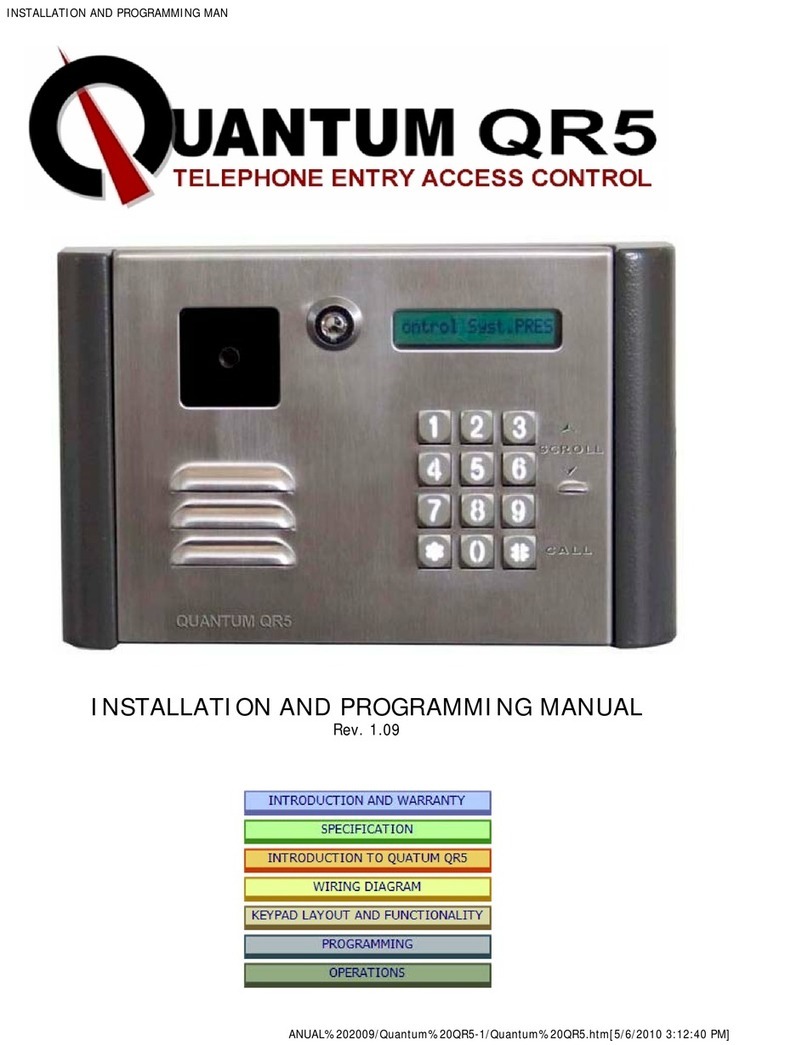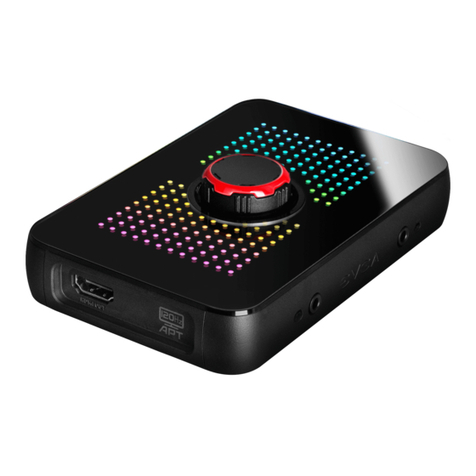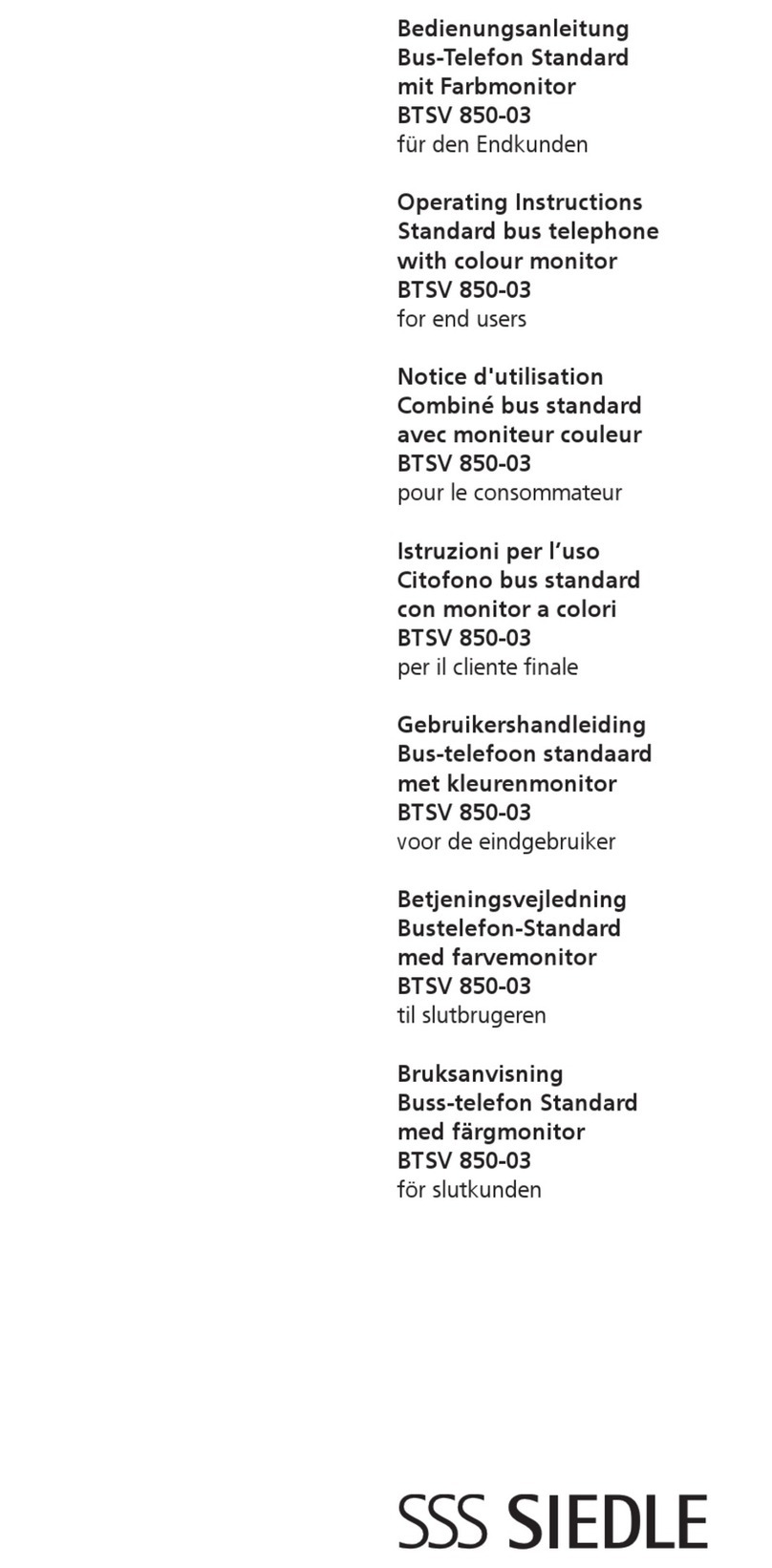4
MODULAR PUSH BUTTON PANELS
SERIES 800
This new range consists of a series of modules in conjunc-
tion with special supports complete with back box or with
supports complete with surface mounting box. The appro-
priate assembling of the various modules with the front sup-
ports allows any size of front door panel with many different
configurations.. The various items of the system can be
identified with following groups:
- Modules
- Front supports complete with opening hinge and
back box
- Surface mounting box.
ACCESSORIES:
- Covering frames.
- Rainshields
Features of modules
Push buttons are protected and reinforced with a plate in stainless
steel, while modules front plates are in:
SStandard-Stainless Steel
AAli
WWhite
BBrown
BZ Bronze
Card name illumination on:
- Door station modules with 2 leds
- Call modules and information modules with lamp 24V 3W
All modules have same dimensions (119X97X29) and can be subdivi-
ded in four groups:
- Speaker Units
- Extension Front Panels
- Information Modules
- Access control Modules
SPEAKER UNIT MODULES
1+1 systems
Art. 835M-0/.. With 0 call buttons.
Art. 835M-1/.. With 1 call button.
Art. 835M-2/.. With 2 call buttons
Art. 835M incorporates in a small space following circuits:
A- Rectifier and voltage regulator.
B- Modulated tone generator.
C- Transmitting amplifier with condenser microphone.
D- Receiving amplifier with “VOLUME” control.
E- Balance circuit with “BALANCE” control to avoid the
Larsen effect.
F- Voltage discriminator to guarantee a full lock
and speech
privacy.
G- 2 leds to illuminate the card name.
Connecting terminals
D- Common speech
D1 - Common speech Diode for additional
extension panel.
- Power input 13Vac.
- Power output 13Vac for the electric lock.
S- Output, command to activate the electric lock.
3- Ground (Common wire).
- Power input 13Vac.
P2 - Speech, call user No.2, command electric lock.
P1 - Speech, call user No.1, command electric lock.
C- Output, common call buttons
C1 - Common push buttons
PULSANTIERE MODULARI
SERIE 800
Sono costituite da una serie di moduli da inserire su appo-
siti supporti completi di scatole da incasso o su supporti
portamoduli completi di scatola di protezione per montag-
gio a filo muro. Assemblando opportunamente i vari modu-
li si ha la possibilità di realizzare pulsantiere di ogni tipo e
configurazione. Il sistema comprende i seguenti gruppi di
particolari:
- Moduli
- Sostegni portamoduli completi di scatola da incasso
- Scatole di protezione per montaggio filo muro complete di sostegni
portamoduli
ACCESSORI:
- Cornici decorative in alluminio
- Tettucci antipioggia per scatole da incasso
Caratteristiche tecniche dei Moduli
I tasti di chiamata sono protetti da lamierino in acciaio inox mentre le
placche frontali dei moduli sono in:
SStandard-Acciaio Inox
AAlluminio anodizzato argento
WAlluminio verniciato bianco
BAlluminio verniciato marrone
BZ Alluminio elettrocolore chiaro (bronzo)
I cartellini portanome si inseriscono agendo all’esterno del modulo.
L’illuminazione dei cartellini avviene:
- Nei moduli portiere elettrico con 2 led.
- Nei moduli di chiamata ed informazione con lampada 24V 3W
Le dimensioni di ciascun modulo sono: mm 120X97X29.
I moduli si distinguono in:
- Moduli con Portiere elettrico (4+1 o 1+1)
- Moduli di chiamata
- Moduli di segnalazione
- Moduli di controllo accessi
MODULI CON PORTIERE ELETTRICO
Impianti citofonici 1+1
Art. 835M-0/.. 0 pulsanti di chiamata
Art. 835M-1/.. 1 pulsante di chiamata
Art. 835M-2/.. 2 pulsanti di chiamata
L’Art. 835M, integra in poco spazio:
A- Circuito rettificatore e stabilizzatore.
B- Generatore di nota modulata.
C- Amplificatore di trasmissione con microfono a condensatore.
D- Amplificatore di ricezione, con regolazione di volume,
su altoparlante da 0.5W.
E- Circuito di bilanciamento con relativa regolazione “BALANCE” per
evitare l'Effetto Larsen.
F- Circuito di lettura tensione per abilitazione e disabili
tazione fonica
e azionamento serratura (segreto di conversazio-
ne e serratura).
G- 2 led illuminazione cartellini.
Morsettiera
D- Comune fonia
D1 - Comune diodi per estensione pulsanti di chiama-
ta.
- Ingresso alimentazione 13Vac
Uscita 13Vac per serratura elettrica.
S- Uscita per azionamento serratura elettrica
3- Massa fonica (filo comune).
- Ingresso alimentazione.
P2 - Fonia, chiamata, comando serratura, utente 2.
P1 - Fonia, chiamata, comando serratura, utente 1.
C- Uscita segnale di chiamata
C1 - Comune pulsanti.
Art. 835M-0/.. Art. 835M-1/.. Art. 835M-2/..
Art. 835M

